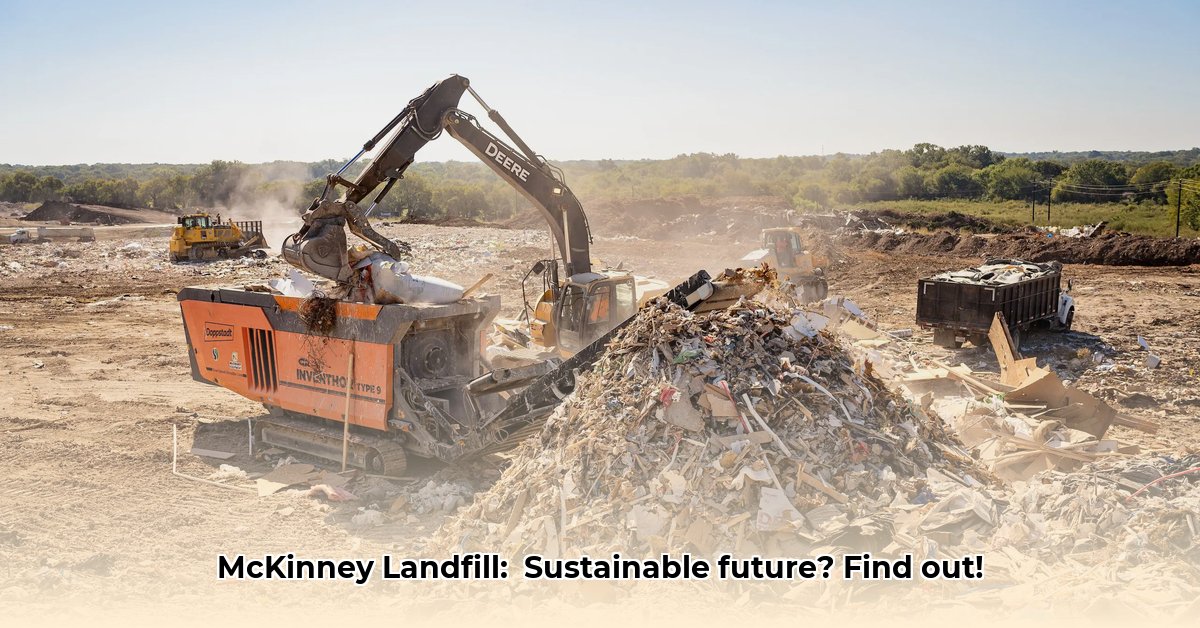
Current Operations and Sustainability Assessment of the 380 McKinney C&D Landfill
The 380 McKinney C&D Landfill, a privately owned facility, accepts construction and demolition (C&D) debris, excluding hazardous materials, whole trees, and certain electronics. While operating within Texas regulations for Type IV landfills, the landfill's overall sustainability performance lacks readily available data to allow for a comprehensive assessment. This opacity hinders efforts to accurately evaluate its environmental impact and benchmark it against industry best practices. How can we ensure responsible waste management without complete transparency?
Currently, the landfill's recycling capabilities are limited, though a commingled recycling program is planned for 2024. This initiative presents a significant opportunity for improvement, but its success hinges on robust sorting techniques, efficient processing capabilities, and public education on proper waste disposal. What measures will be put in place to ensure minimal contamination of recyclable materials?
Mention of a "LEED Project Recycling" program indicates a potential commitment to sustainability. However, the lack of specific details regarding its scope and LEED certification target prevents a thorough evaluation of its effectiveness. This lack of transparency raises concerns about the seriousness of the landfill's environmental stewardship.
Actionable Steps for Improved Sustainability
Addressing the McKinney landfill's sustainability challenges requires a collaborative effort among landfill management, local government, and the construction industry. The following steps outline a strategic pathway towards a greener future.
1. Enhanced Transparency and Data Collection:
- Goal: Publicly release comprehensive data on waste diversion rates, remaining landfill capacity, and methane emissions within six months. (This creates a baseline for future progress assessments.)
- Metrics: A 95% accuracy rate for reported data using standardized measurement methodologies.
2. Optimize the Commingled Recycling Program:
- Goal: Successfully launch the planned commingled recycling program in 2024, achieving a waste diversion rate of at least 30% within the first year.
- Metrics: Track the percentage of successfully recycled materials in the first 12 months, target a contamination rate below 5%.
3. Invest in Advanced Waste Processing Technologies:
- Goal: Conduct a thorough cost-benefit analysis to evaluate the feasibility of implementing advanced sorting technologies, such as AI-powered sorting systems, by 2025.
- Metrics: Assess ROI (Return on Investment) against both environmental and economic impact; projected payback period of 5 years or less.
4. Strengthen Public Awareness and Education:
- Goal: Launch targeted public awareness campaigns to educate residents on proper waste disposal and recycling practices within the next year.
- Metrics: Measure campaign effectiveness through surveys and waste audits, aiming for a 20% increase in proper waste separation.
5. Pursue LEED Certification:
- Goal: Secure LEED certification for the landfill's operations within 3 years. This will require a comprehensive sustainability plan encompassing energy conservation, water usage, and emissions reduction.
- Metrics: Achieve a Gold or Platinum LEED certification level.
Overcoming Potential Challenges
Several potential risks could hinder the landfill's sustainability efforts. Proactive mitigation strategies are essential to prevent these from derailing progress.
1. Recycling Program Failure: The possibility of program failure due to contamination or inefficiencies is a significant concern. Mitigation involves investing in high-quality sorting equipment, comprehensive public education, and continuous monitoring of contamination levels.
2. Regulatory Compliance Challenges: Maintaining open communication with regulatory agencies and conducting regular environmental audits is critical to ensure ongoing compliance.
3. Reaching Landfill Capacity: Exploring waste reduction initiatives, recycling improvements, and potentially alternative waste management strategies can help extend the landfill's lifespan, avoiding premature capacity limits.
Expert Perspective
"The McKinney landfill's journey towards sustainability necessitates a data-driven approach," states Dr. Emily Carter, Professor of Environmental Engineering at the University of Texas at Austin. "Transparent data reporting, coupled with investment in advanced technologies and public engagement, is crucial for achieving meaningful and lasting improvements."
Conclusion: A Path Towards Sustainability
The McKinney landfill possesses the potential to become a model of sustainable waste management. However, realizing this potential necessitates a commitment to transparency, collaboration, and continuous improvement. By proactively addressing the outlined challenges and implementing the proposed strategies, the landfill can significantly reduce its environmental footprint and contribute to a more sustainable future for the McKinney community. The success hinges upon the collective efforts of all stakeholders.